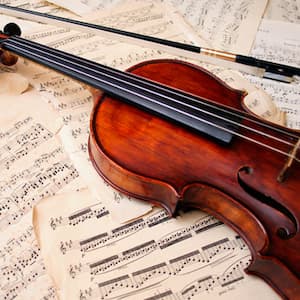
© Connolly Music Company
Albert Einstein is one of the greatest physicists of all time. Since he was a highly original thinker, his name has become synonymous with genius. Yet, this most famous and immortal scientist once said, “the most joy in my life has come to me from playing my violin.” I suppose, Einstein was talking about the violin being the most human of all instruments, directly expressing the language of his soul.
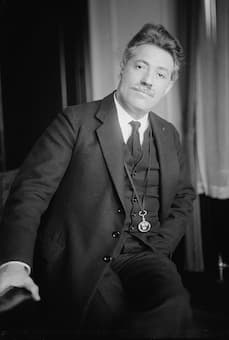
Fritz Kreisler
I have always wanted to take violin lessons, but sadly it never happened. Instead, I now have become an active listener to classical violin music, and it’s amazing how many of the most beautiful melodies have been composed for this special instrument.
Fritz Kreisler: Liebesleid (Love’s Sorrow)
I have tried to pick 15 of the best classical musical selections specifically written for the violin. Please don’t be mad at me if your most beloved tune isn’t featured. So let’s get started with music by a violinist who was famous for his sweet tone and expressive phrasing, the fantastic Fritz Kreisler (1875-1962).
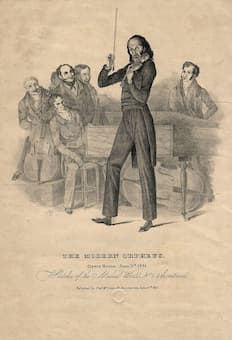
Niccolò Paganini
Niccolò Paganini: Caprice in A minor, Op. 1, No. 24
Niccolò Paganini (1782-1840) was the undisputed master of the violin. At the same time he was also a brilliant self-promoter. He told everybody that he had sold his soul to the devil in exchange for his incredible technical abilities. Apparently, he played so intensely that “women would faint and men would break out weeping.” Franz Liszt described Paganini as “a miracle, which the kingdom of art has seen but once.” Yet he was also aware that Paganini’s artistry had been flawed by his egotism, “his god was never any other than his own gloomy, sad ‘I’.” Regardless, Paganini developed innovative and unique special effects for the instrument. And his exceptional skills and extreme personal magnetism greatly contributed to the history of the instrument. His influence on playing the violin was timeless, and that’s also true of some of his best and most famous tunes.
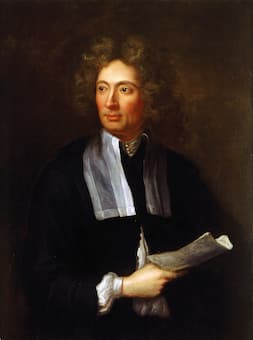
Arcangelo Corelli
Arcangelo Corelli: Concerto in D Major, Op. 6, No. 4
The famed violinmakers of Cremona initiated the golden age of string music in Italy in the 17th century. We only need to think of Antonio Stradivari, Nicolò Amati and Giuseppe Guarneri; their priceless and unique instruments are still top of the class today. These beautiful instruments inspired a special kind of string music, called “concerto.” The man at the center of this new kind of string music was Arcangelo Corelli (1653-1713). He contrasted a small instrumental group of soloists with a bigger full orchestra, and produced some of the most delightful classical violin music, ever. I can’t help but be totally enchanted and charmed by this music from the early Baroque; I am almost sure you feel the same way.
Pablo de Sarasate: Zigeunerweisen, Op. 20 (Gypsy Melodies)
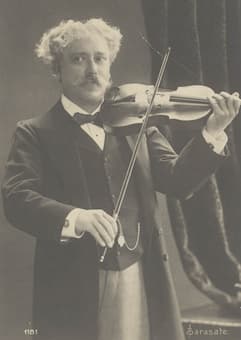
Pablo de Sarasate
The Spanish violin virtuoso Pablo de Sarasate (1844-1908) actually owned two Stradivarius violins. The “Sarasate Stradivarius” was constructed in 1724, and the “Boissier Stradivarius” dates from 1713. Sarasate started his violin lessons at the age of four, and by ten he first appeared in public. He studied at the Paris Conservatoire and formed friendships with Rossini, Saint-Saëns, Lalo, Liszt, Rubinstein, Gounod and Meyerbeer.
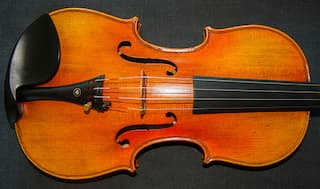
Kruse Stradivarius, 1721
It was said, “there were many composers of music for the violin, but there were but few composers of violin music,” and Sarasate was one of them. Sarasate always wrote idiomatically for his instrument, and his compositions are primarily showpieces demonstrating his exceptional technique. Without doubt, one of his most famous works is his “Gypsy Melodies,” composed in 1878. To be sure, it is a masterwork of classical violin music.
Pablo de Sarasate: Zigeunerweisen, Op. 20 (Gypsy Melodies) (Marat Bisengaliev, violin; Polish National Radio Symphony Orchestra; Johannes Wildner, cond.)
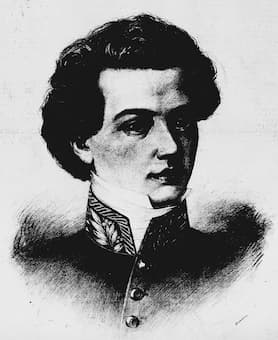
Josef Slavík
Franz Schubert: Rondo Brilliant in B minor, D. 895
We know that Franz Schubert (1797-1828) was the master of writing beautiful and lyrically flowing melodies. However, we generally don’t associate him with writing classical violin music. But when he heard the young Bohemian violin virtuoso Josef Slavík, he got all exited. Inspired by the technical mastery and flamboyant personality of the violinist who was called “a second Paganini” by Chopin, Schubert wrote a couple of rare display pieces. The “Rondo in B minor” for violin and piano was praised for its “originality, its succession of new ideas and its difficulty,” but it never caught on in the amateur market; it was just too difficult. It is full of virtuosity and flowing lyrical melodies, and it is one of the hidden gems of classical violin music.
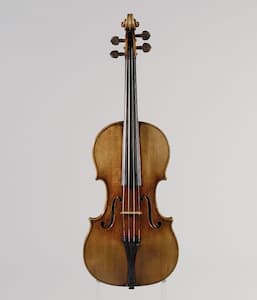
The Antonius Stradivarius, 1711
Ludwig van Beethoven: Romance No. 2 in F Major, Op. 50
Contrary to Schubert, Ludwig van Beethoven wrote a substantial amount of music for the violin. As a young boy, Beethoven did take violin lessons but apparently preferred to improvise. Supposedly, his father once scolded him by saying, “what silly trash are you scratching together now? You know I can’t bear that – scratch by note, otherwise your scratching won’t amount to much.” And while he played viola in the opera and chapel orchestras of Bonn, he met some of the finest string players of his time after moving to Vienna. We still don’t know why he composed two Romances for solo violin and small orchestra, but they are surely staples of classical violin music. It’s some of the most emotional and sweet music that Beethoven ever composed. Maybe, it all had to do with yet another ill-advised love infatuation?
Ludwig van Beethoven: Romance No. 2 in F Major, Op. 50 (Manrico Padovani, violin; Moscow Philharmonic Orchestra; Boris Perrenoud, cond.)
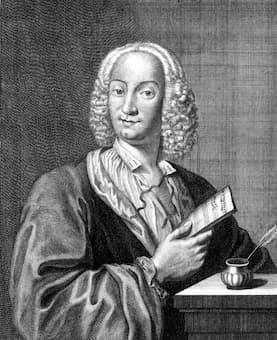
Antonio Vivaldi
Antonio Vivaldi: Four Seasons, “Spring”
When we look at the staples of classical violin music, the name Antonio Vivaldi (1678-1741) comes in at the top of the list. Although Vivaldi composed in the region of four hundred concertos, “The Four Seasons” have been audience and performer favourites for countless decades. What makes them so popular, I think, is the idea that Vivaldi experimented with the structure of the solo concerto by including musical depictions of events found in nature. In the famous “Spring” Concerto we hear the songs of the birds, springs gushing, a sleeping goatherd, the dogs barking and a concluding “Country Dance.” It is without doubt a work of genius, and one of the most famous works for the violin, ever.
Johann Sebastian Bach: Violin Concerto No. 1 in a minor, BWV 1041
Johann Sebastian Bach (1685-1750) never actually met Antonio Vivaldi in person. Bach was simply too busy in his work as a church musician to do much traveling. But he did know Vivaldi’s music. When Bach was working in Weimar around 1712, the music of Vivaldi became all the rage at the Weimar court. Bach was immediately fascinated and thoroughly studied all the available Vivaldi scores. Bach was delighted by the simplicity and elegance of Vivaldi’s music, and he added his own contrapuntal mastery. And the delightful result is some of the most compelling music ever written. Bach did write a substantial number of compositions for the violin, and his concertos for the instrument are undisputed staples of classical violin music.
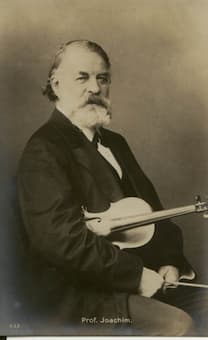
Joseph Joachim
Johannes Brahms: Violin Concerto in D Major “Allegro giocoso”
Johannes Brahms (1833-1897) was not a violinist. But he did have the great fortune to be best friends with the world-famous violinist Joseph Joachim. Joachim kept asking Brahms to write a concerto for him, and finally the composer agreed. However, Brahms did not want to write a showpiece in the conventional style, but he was looking at a hybrid between a concerto and a symphony. Brahms offered the concerto manuscript to Joachim for suggestions, and both kept refining and revising the work for a long time. In the end, Joachim even wrote the Cadenza for the first movement. The third movement is one of the best songs of classical violin music as Brahms paid respect to the Hungarian-born Joachim by including a distinct gypsy flavor.
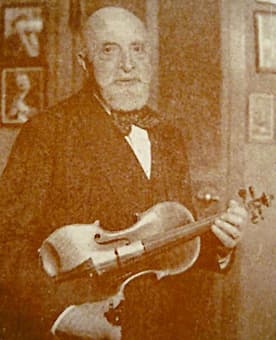
Leopold Auer
Pyotr Ilyich Tchaikovsy: Sérénade mélancolique, Op. 26
Pyotr Ilyich Tchaikovsky (1840-1893) was also not a trained violinist. But he nevertheless composed some of the most heartfelt and beautiful classical violin music. The Hungarian-born violinist Leopold Auer had been a student of Joseph Joachim. He was appointed professor of violin at the St. Petersburg Conservatory when he was only 23. A couple of years later he asked Tchaikovsky for a piece for violin and orchestra. Tchaikovsky had just finished his First Piano Concerto, and he immediately agreed. The resulting work was called “Sérénade mélancolique,” a title that perfectly reflects the character of the music. Both lyrical and melancholy, it’s a testament to Tchaikovsky’s craft and to the expressive and emotional nature of the violin.

Ferdinand David
Felix Mendelssohn: Violin Concerto in E minor “Andante”
Contrary to Brahms and Tchaikovsky, Felix Mendelssohn (1809-1847) was a trained violinist. Similar to Brahms and Tchaikovsky, however, he also relied on the assistance of an eminent violinist in composing his concerto. Ferdinand David and Mendelssohn were good friends, and when Mendelssohn founded the Leipzig Conservatory he quickly appointed David. He was much admired as a soloist, concertmaster, quartet leader, and teacher. And the Mendelssohn violin concerto was intended for him from the very beginning. The central “Andante” movement is one of Mendelssohn’s most stunning songs without words, and it is an exceptionally beautiful example of classical violin music.

Max Bruch, 1920
Max Bruch: Violin Concerto No. 1 in G minor, “Prelude: Allegro moderato.”
Talking about violin concertos, the great violinist Joseph Joachim suggested that Max Bruch (1838-1920) had “written the richest and most seductive violin concerto of all time.” Bruch hated the piano, which he called a “dull rattle-trap.” He much preferred the violin because it “can sing a melody much better than a piano, and melody is the soul of music.” Bruch personally knew the most imminent violinist of his time, including David, Joachim, Sarasate, and Willy Hess, and he wrote nine concerted works for them. The G-minor concerto is one of the staples of classical violin music. Highly popular with audiences and performers alike, this stunning composition has clearly withstood the test of time.
Max Bruch: Violin Concerto No. 1 in G minor – I. Prelude: Allegro moderato (Janine Jansen, violin; Leipzig Gewandhaus Orchestra; Riccardo Chailly, cond.)
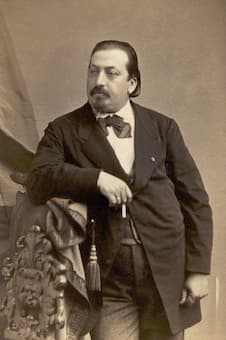
Henryk Wieniawski
Henryk Wieniawski: Violin Concerto No. 2, “Romance”
Henryk Wieniawski (1835-1880) was frequently called the greatest violinist of his time. He had impeccable technique and was capable of producing a wonderfully warm and rich tone. His famed colleague Fritz Kreisler wrote, “The emotional quality of his tone was heightened by an intensified vibrato which he brought to heights never before achieved.” It’s not surprising that Wieniawski loved to compose rich melodies, which he presented dispassionately and serenely. His influence as a virtuoso, pedagogue and composer was far-reaching, and the “Romance” from his 2nd Violin Concerto makes that point most convincingly.
Henryk Wieniawski: Violin Concerto No. 2 in D Minor, Op. 22 – II. Romance: Andante (Gil Shaham, violin; London Symphony Orchestra; Lawrence Foster, cond.)
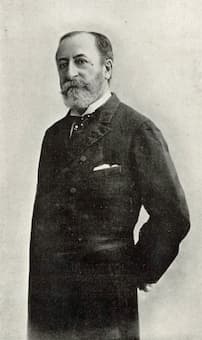
Camile Saint-Saëns, circa 1880
Camile Saint-Saëns: Introduction and Rondo Capriccioso, Op. 28
Like many composers before him, Camille Saint-Saëns (1835-1921) greatly benefitted from the advice of a great violinist. Saint-Saëns was in his early twenties when he met the fifteen-year old Pablo de Sarasate. The composer remembered this first meeting as follows, “the faint shadow of a moustache scarcely visible on his upper lip, he was already a famous virtuoso. As if it were the easiest thing in the world, he had come quite simply to ask me to write a concerto for him.” The first work written for Sarasate was indeed the Concerto in A Major, and four years later Saint-Saëns followed it up with the spectacular “Introduction and Rondo capriccioso.” It immediately became highly popular as it contains some of the loveliest tunes in classical violin music.
Jenő Hubay: Carmen fantasie brillante, Op. 3, No. 3
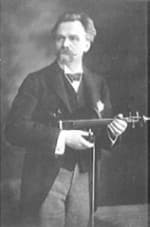
Jenő Hubay
Let us conclude this small selection of classical violin music with a musical firework. The Hungarian violinist and composer Jenő Hubay (1858-1937) first appeared on the concert stage at the age of 11. He became a student of Joseph Joachim, and he was described as “combining the enthralling personality of Franz Liszt, the facility and subtle virtuosity of Vieutemps, the philosophical calm and the depth of Joachim, and the Polish passion of Wienawsky with his Hungarian impulsiveness.” Wow, it doesn’t get much better than that. In the event, Hubay became a superstar and his most popular encore is a Fantasy on Bizet’s opera “Carmen”. You will quickly recognize all the tunes, and the violin unbelievably captures the spirit and the emotions of the music. I could go on forever, and I haven’t even included any movements from the vast violin sonata repertoire. There is always next time; please enjoy the music.
For more of the best in classical music, sign up to our E-Newsletter

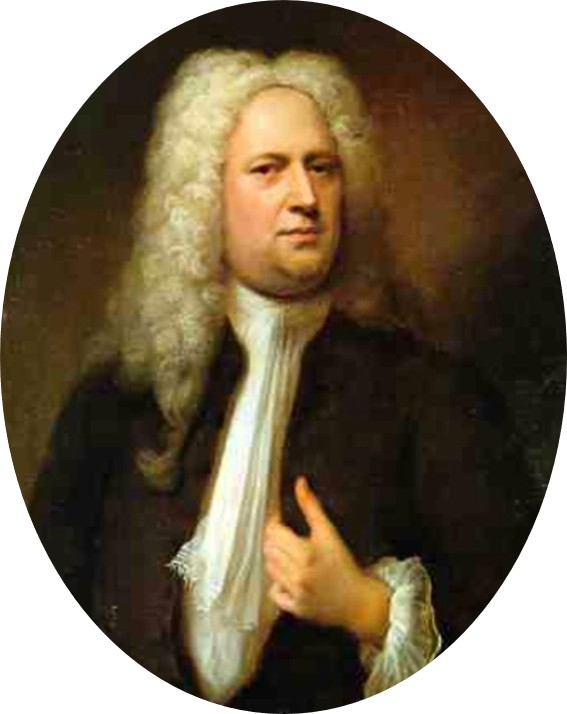
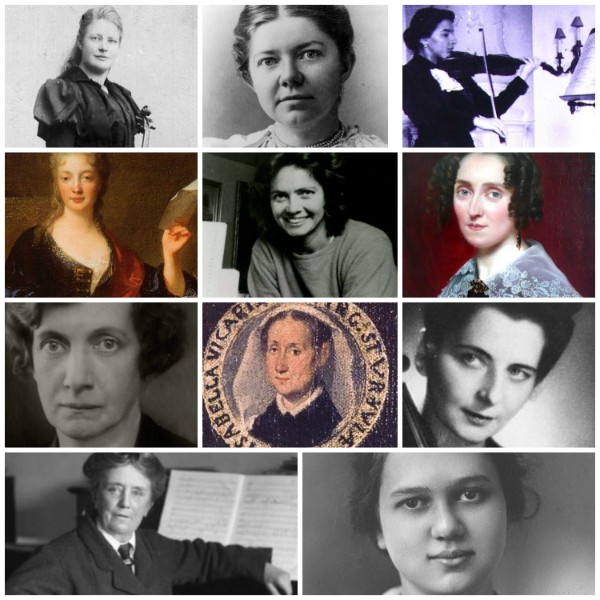
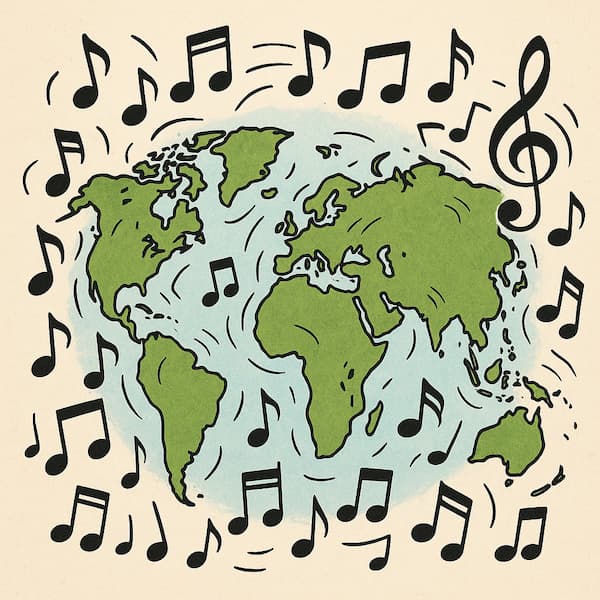
A lovely couple of hours of beauty. A real pleasure. Loved the brief histories for each as well. But may I be so bold as to add one more piece to this beautiful list: Ralph Vaughn Williams’ “The Lark Ascending.”